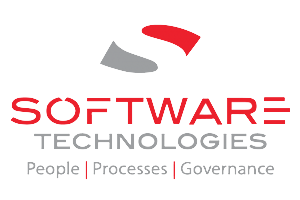
In today’s rapidly evolving business environment, contracts are the backbone of almost every organization. Whether it’s vendor agreements, customer contracts, employment terms, or partnerships, contracts play a pivotal role in defining the rules and responsibilities that govern these relationships. However, managing contracts can be a complex and daunting task, especially when they are scattered across different departments and stakeholders. This is where Contract Lifecycle Management (CLM) comes into play.
Contract Lifecycle Management: An Overview
Contract Lifecycle Management, often abbreviated as CLM, is a systematic and strategic approach to managing contracts from their inception to execution, renewal, or termination. It involves the entire lifecycle of a contract, from initial request and drafting to negotiation, approval, execution, and post-execution management. The primary goal of CLM is to streamline and optimize the contract management process, making it more efficient, transparent, and less prone to errors.
The Six Stages of Contract Lifecycle Management
- Request: The first stage involves the initiation of a contract. This can be a request for a new contract or an amendment to an existing one. During this phase, stakeholders identify the need for a contract and submit a request to the contract management team.
- Authoring and Drafting: Once a contract request is received, the contract management team drafts the contract. This stage involves defining the terms and conditions, legal language, and any specific requirements related to the contract.
- Negotiation and Approval: After the initial draft is created, the contract undergoes a negotiation process. This typically involves back-and-forth discussions between the parties involved. Once both parties agree on the terms, the contract is sent for approval by the relevant authorities.
- Execution: The execution phase involves the signing of the contract by all parties. This can be done electronically or through traditional paper-based methods, depending on the organization’s processes and technology.
- Monitoring and Compliance: Once the contract is executed, it’s crucial to monitor compliance with the agreed-upon terms. CLM software can help track key milestones, deadlines, and obligations outlined in the contract.
- Renewal and Termination: As contracts approach their expiration date, CLM software can provide notifications for renewal discussions or initiate the termination process if necessary.
The Benefits of Contract Lifecycle Management
- Increased Efficiency: CLM streamlines the entire contract management process, reducing the time and effort required to create, negotiate, and execute contracts.
- Risk Mitigation: CLM helps organizations identify and mitigate risks associated with contracts by ensuring that all terms and conditions are clear, compliant, and adhered to.
- Improved Collaboration: With CLM software, stakeholders can collaborate more effectively, even when they are geographically dispersed, leading to faster decision-making and reduced bottlenecks in the contract management process.
- Enhanced Visibility: CLM provides real-time visibility into the status of contracts, making it easier to track performance, deadlines, and obligations.
- Cost Savings: By eliminating manual and paper-based processes, CLM reduces administrative costs and minimizes the risk of errors that can lead to costly disputes or non-compliance penalties.
- Data-Driven Insights: CLM software generates valuable data and analytics, enabling organizations to make informed decisions, optimize contract terms, and identify areas for improvement.
In a world where contracts are the lifeblood of business relationships, Contract Lifecycle Management has emerged as a vital tool for organizations seeking to streamline their operations, reduce risks, and drive efficiency. By managing contracts through their entire lifecycle, from creation to execution and beyond, businesses can gain a competitive edge and ensure that their contractual agreements are both legally sound and aligned with their strategic objectives. As technology continues to evolve, embracing CLM will become increasingly essential for staying agile and competitive in the modern business landscape.
